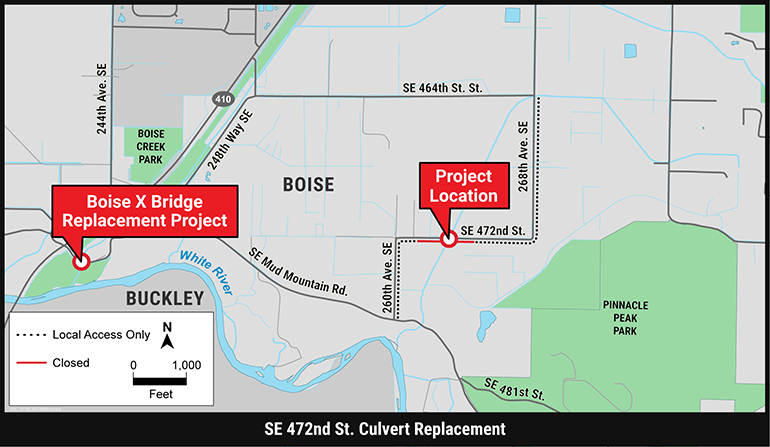SE 472nd Street Culvert Replacement Project
Road reopened on September 4, 2025

After the new box culvert was installed, crews built back the road and smoothed it over with a fresh layer of asphalt. The road reopened to traffic on September 4, 2025.
Status update
Sept 24, 2025
Work to replace the rusted metal culvert under SE 472nd Street began on July 11, 2025, and required an eight-week road closure.
The road reopened to the community on September 4, 2025, at 8 a.m. Our crew worked very hard to complete this project as quickly, safely, and efficiently as possible, and finished ahead of schedule.
The crew will return to SE 472nd St in October 2025 with occasional lane restrictions while they install guardrail and do planting.
Project overview
King County replaced a narrow, worn-out metal pipe culvert with a much larger and wider concrete box culvert under SE 472nd Street. The improvements will stabilize the road and make it easier for fish to pass under SE 472nd Street and continue their migration to and from the White River.
The original metal pipe culvert was wide enough to prevent the road from flooding. However, it was rusted and old and needed to be replaced before it collapses. If the pipe collapsed the force and volume of the water could have caused the entire roadway to fail.
Construction took approximately two months during summer 2025 and began on July 11th. The limited work area required the county to close both directions of SE 472nd Street between 261st Ave SE and 268th Ave SE to install the culvert underneath the road.
There was no through-access whatsoever while the road was closed, and all travelers including cars, trucks, bicycles, and pedestrians, used alternate routes during the 8-week closure.
Why did King County replacing this culvert?
We replaced the narrow metal culvert because it has outlived its useful life.
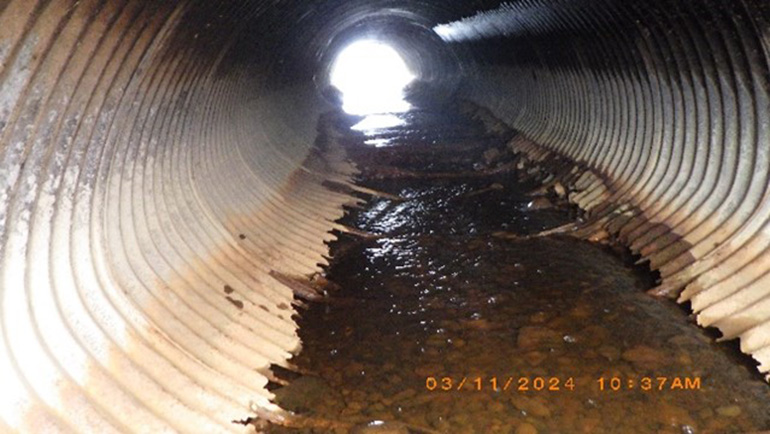
Rust had eaten away at the bottom of the metal pipe, and it needed to be replaced before it failed.
Benefits of the concrete box culvert
Concrete box culverts have many benefits, including durability, strength, and ease of installation.
The new box culvert accommodates a much larger volume of water and has a longer lifespan than a metal pipe.
During construction
During the eight-week closure, crews:
- Dug a large pit in the road and removed the original four-foot metal pipe and prepared for the installation of the new culvert.
- Using a large crane, crews placed the bottom and sides of the new culvert in the ground. Then they placed natural materials inside of the box culvert. It was made to resemble a streambed making it easier for fish to pass through when they return to the area after additional barriers have been removed.
- The crane returned and lowered the lid of the culvert into place.
- Finally, crews rebuilt and paved the road.
The project team worked to prevent dust and dirt caused by construction work from spreading in the air and water.
The project has reopened to traffic and crews will continue low impact restoration work including native landscaping and site clean-up.
Budget and funding sources
This $2 Million project is funded through the Fish Passage Restoration Program.
Frequently asked questions
The original metal pipe culvert was wide enough to prevent the road from flooding. However, it was rusted and old and needed to be replaced before it collapsed. If the pipe collapsed the force and volume of the water could have caused the entire roadway to fail. The new culvert will reduce flood elevations upstream of the culvert.
The original metal pipe would have failed if it were not replaced soon. The county replaced it with a larger box culvert that is built to current road and stream crossing standards that requires a much larger culvert that can accommodate a natural stream bed.
The original metal pipe culvert is 48 inches (4-feet) in diameter. The new box culvert is 16-feet-wide, 8.5-feet high and 40-feet long.
It took take approximately eight weeks to remove the old pipe and install the new box culvert under the road.
Fish have not been observed at this culvert due to a significant barrier to fish passage downstream. Design work on replacing this downstream barrier has begun, however the SE 472nd culvert began first due to the deteriorating condition of the pipe. Once this and the additional downstream barrier are removed there are several species of fish that will have their historic access to this stream restored.
A fish passage barrier is anything that makes it difficult for fish to swim upstream or downstream.
Many fish barriers in unincorporated King County are round pipes (culverts) that channel streams and water underneath the road. Many of these culverts were installed between 30 and 100 years ago. These older culverts allow water to flow but are so narrow and steep that they prevent fish from swimming through them.
This project, in partnership with the Department of Natural Resources and Parks Fish Passage Program, will make it easier for fish to pass under SE 472nd Street once additional barriers are removed. Deteriorating culverts and other barriers block fish passage and undermine the state and county recovery efforts.
The new culvert and creek habitat restoration is designed to move water through at its natural pace, just like a real stream.
Pipe culverts may block fish migration because the water flow is too swift, too shallow, or the culvert is perched too high above the stream.
The ability of salmon and trout to swim upstream to their traditional spawning grounds is vital to their recovery across Washington and King County.
One of the most effective ways to ensure the survival of native fish – and the southern resident orcas that rely on them as a food source – is to remove barriers to their habitat.
The following fish species are found in the White River Basin. There is the potential for these fish to return to the tributary under SE 472nd Street after barriers in the system are removed.
- Winter steelhead trout
- Bull trout
- Coho salmon
- Chum salmon
- Chinook salmon
- Resident cutthroat trout
Photos
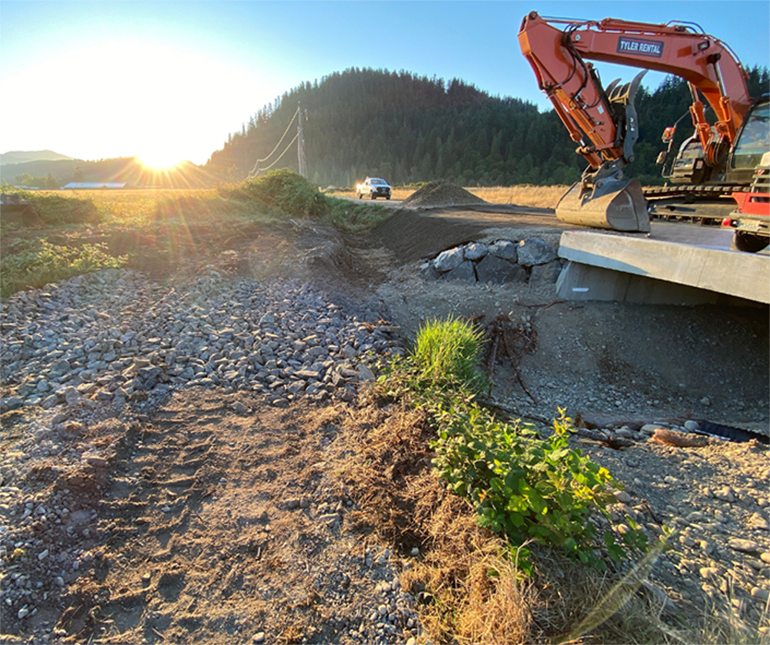
The new concrete box culvert has been installed, and crews have built back the road. After a fresh layer of pavement, the road will reopen to the public on Tuesday, September 2, by 6 p.m.
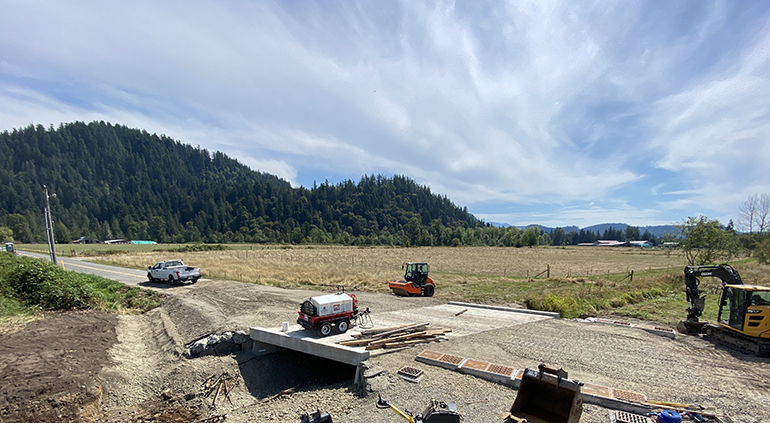
After installing the culvert, crews built back the road. The new culvert provides a sturdy, more supportive foundation to the road.
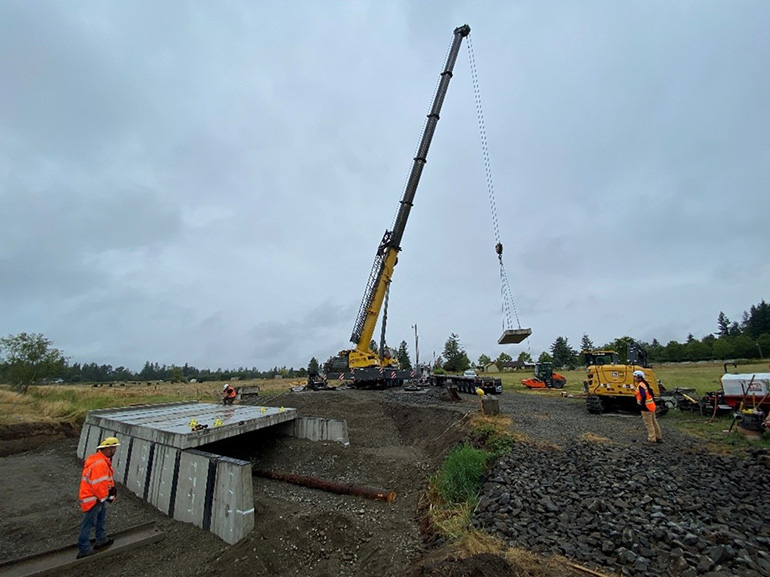
After filling the new concrete box culvert with natural materials like rocks and trees, a large crane moves pieces of the lid into place. Crews will then add dirt and other materials to the sides and top of the culvert to cover it and then rebuild the road.
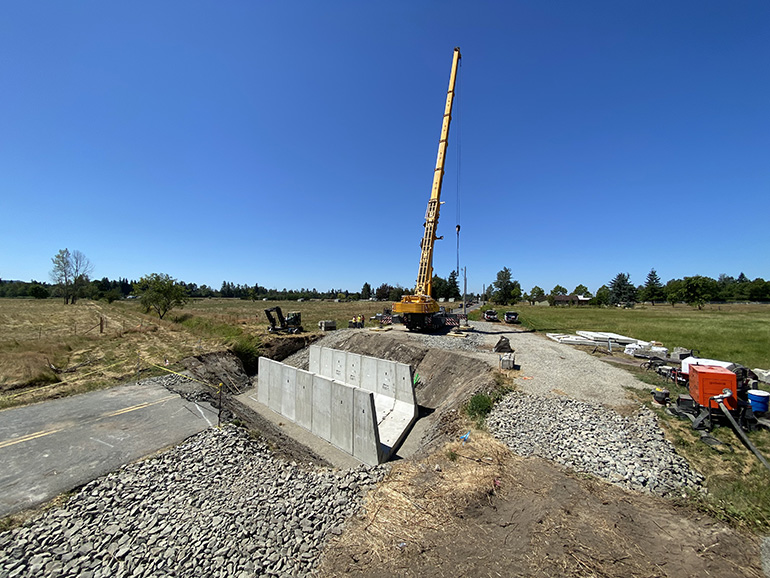
Crews used a large crane to place the bottom and sides of the new concrete box culvert. Next they will add gravel, rocks, logs, and other natural materials to mimic a streambed. The crane will return in early August to place the lid of the four-sided concrete box culvert.
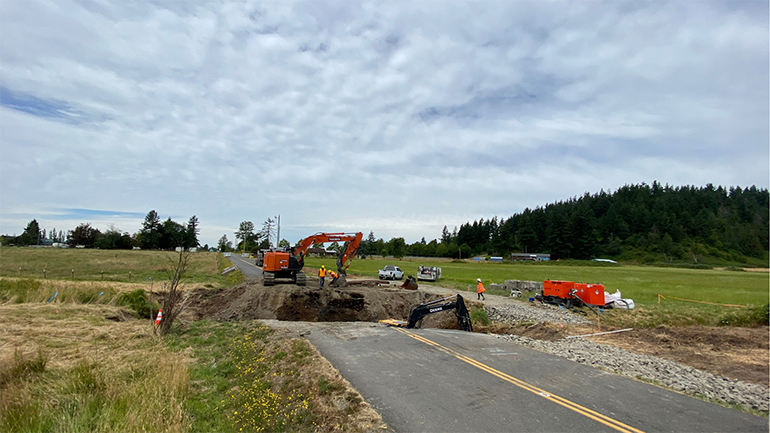
Using heavy machinery, crews dig into the ground to remove an old, rusted pipe and make space for a much larger concrete box culvert. SE 472nd Street is closed 24/7 to all vehicles, bicycles, and pedestrians as crews work in a deep construction pit in the road.
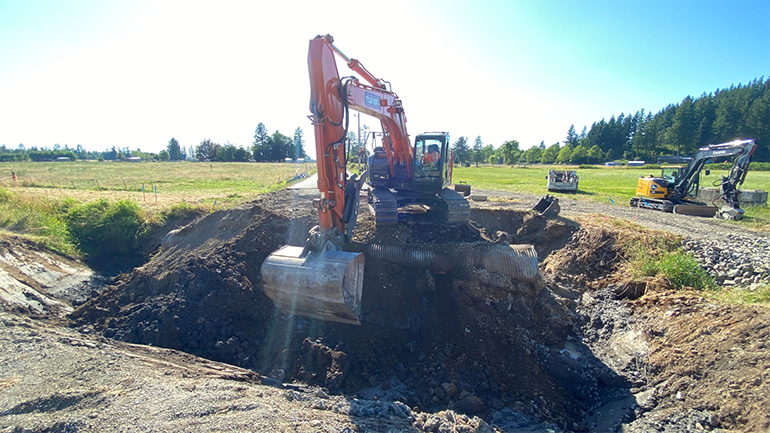
Heavy machinery scrapes away at the earth to remove the old, rusted pipe.

Crews closed SE 472nd Street on July 11th to build a large new concrete box culvert to replace a rusted pipe under the road.
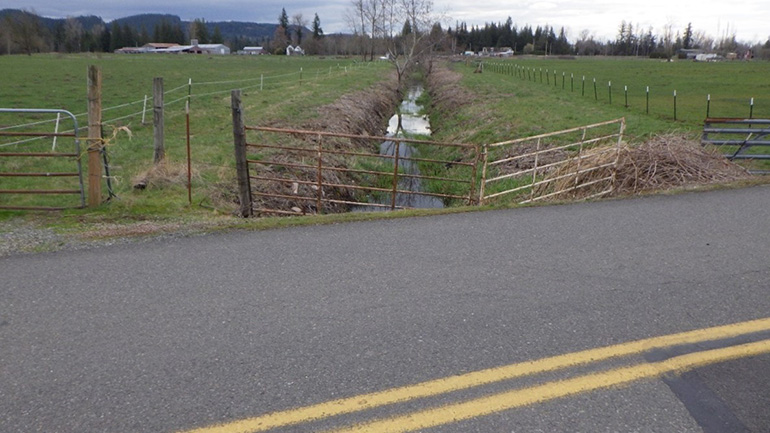
The current metal pipe culvert under SE 472nd Street is rusted and at risk of failing. A new, much larger, concrete box culvert is being constructed to stabilize the road. The new culvert will also be easier for fish to pass through and creates an additional one and a half miles of usable habitat for fish.

SE 472nd Street has been patched above the culvert because the rusted metal pipe can no longer hold the weight of the road and is causing it to sink. The rusted metal pipe culvert is at risk of failing if not replaced.

A closer look at the existing rusting metal pipe under SE 472nd Street.
 Translate
Translate

